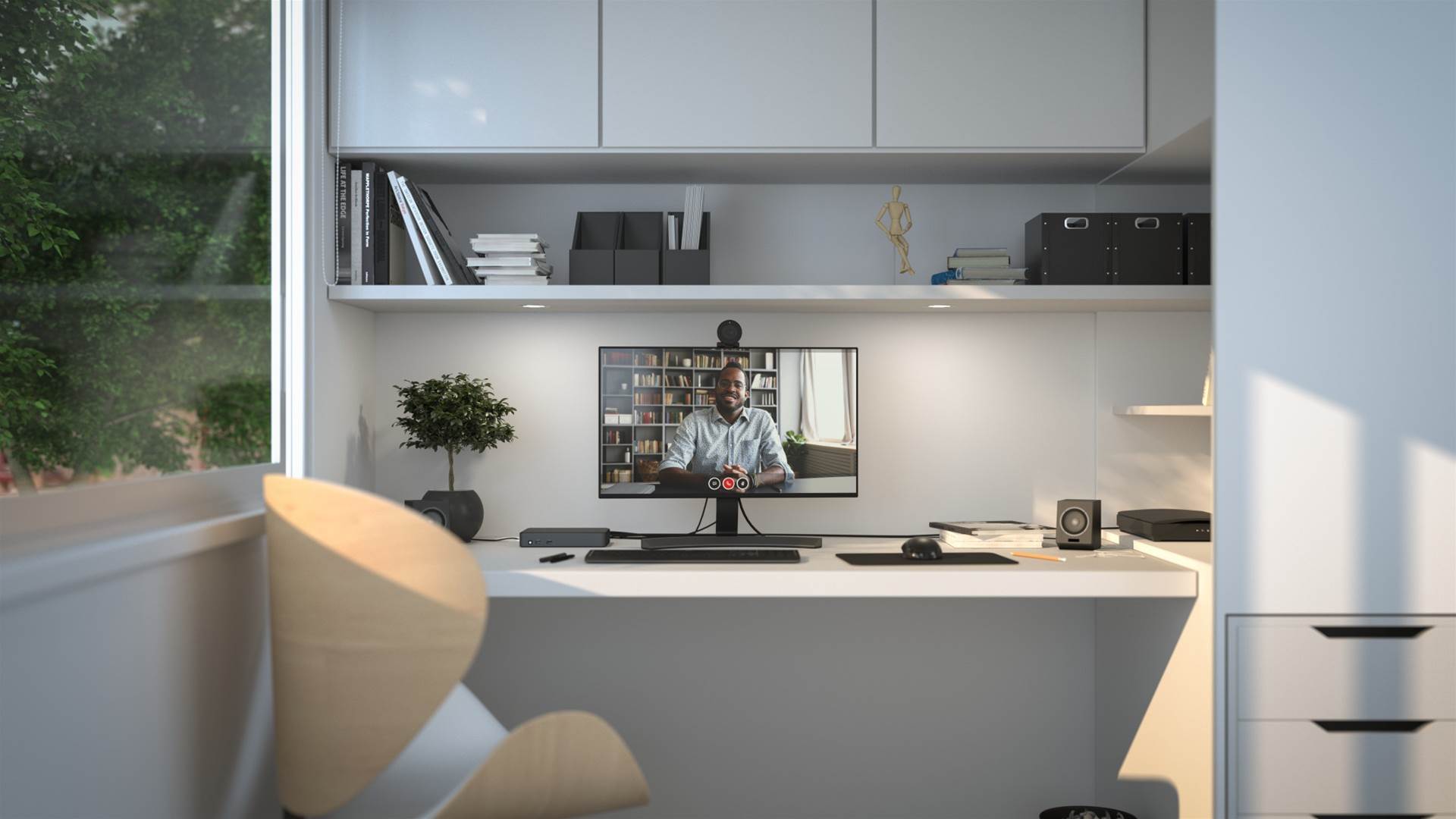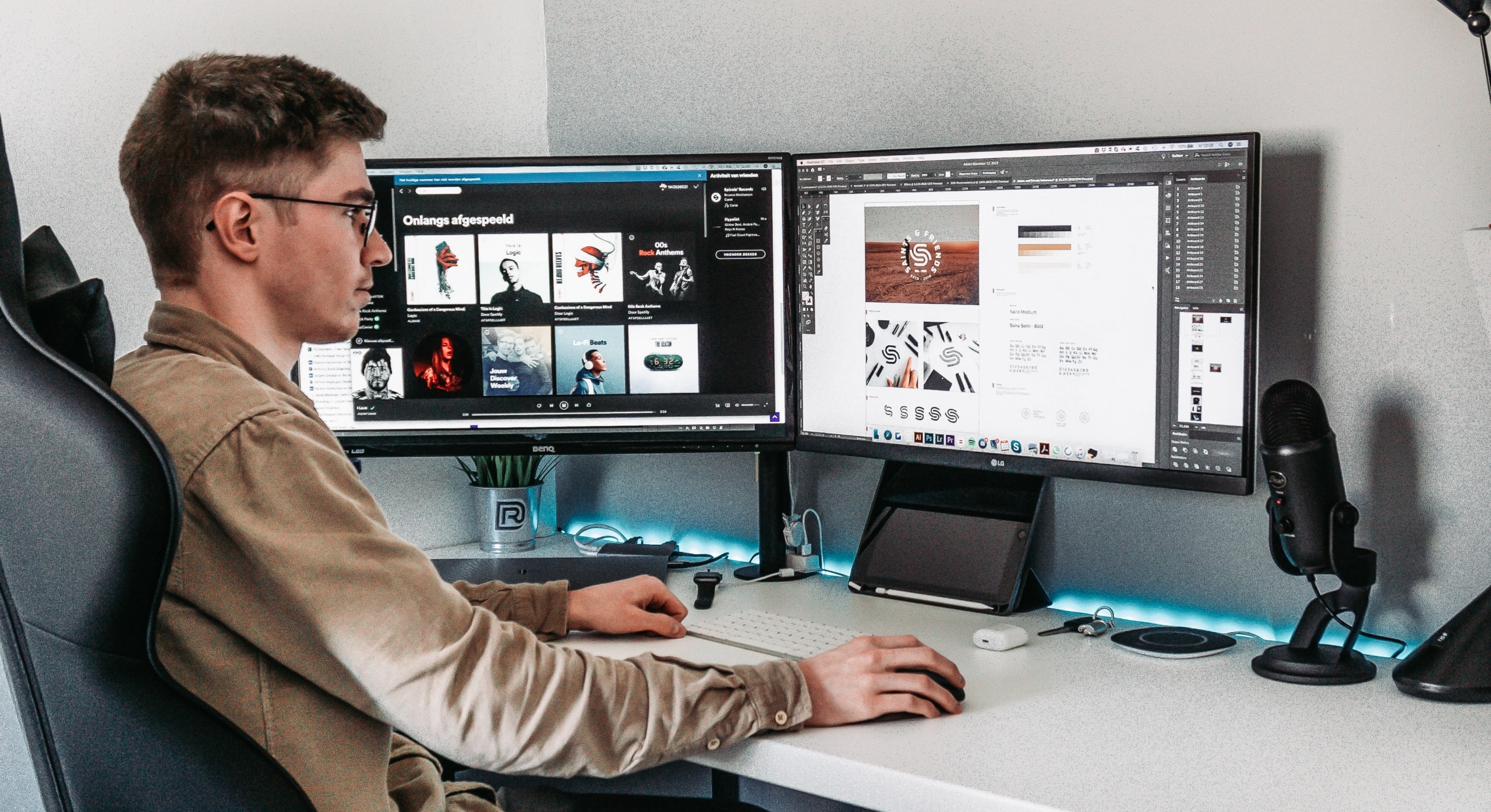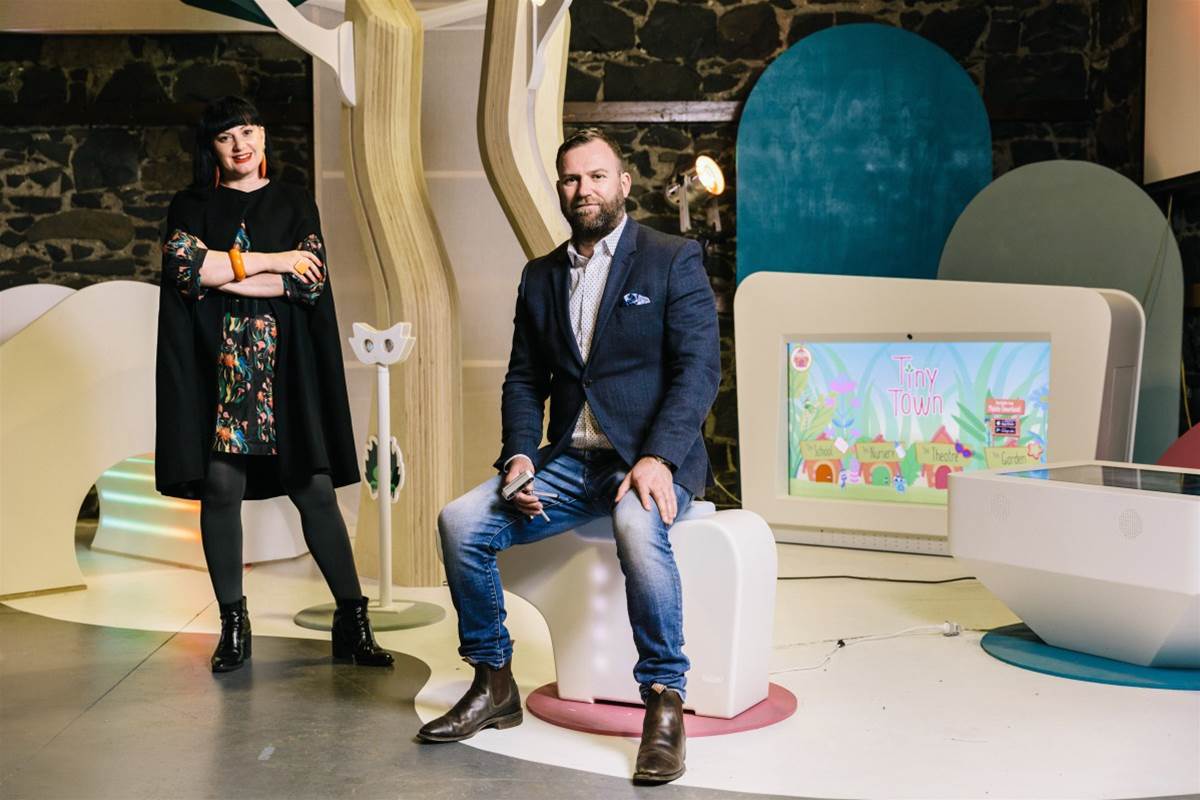Modular computing is helping businesses think bigger without having to go bigger
You don’t carry a full-sized desk phone when you’re on the road – so why should you deploy a full-sized desktop PC for your organisation when a much smaller one is a better fit?
The Intel® NUC family of small form factor PCs was designed to answer this question – and it has transformed the way companies think about computing power.
Designed for businesses, educators, specialist integrators and others who want more control over the devices they use, the NUC – short for Next Unit of Computing – includes NUC Mini PCs shipping with Windows 10 out of the box; NUC Kits with customisable boards and chassis; and NUC Boards designed for fully customisable solutions.
But it is NUC Elements, the fourth element in the NUC family, which promises to reinvent the way enterprises and systems integrators think about computing.

By providing a full range of modular components that can be upgraded or replaced as needed, the NUC Elements family allows businesses to design bespoke computing solutions specifically tailored to their needs.
This has made it perfectly suited for environments such as interactive displays – think airports, hospitals and shopping centres – where space is at a premium but developers need as much computing power as they can get.
NUC Elements supports a range of full-powered CPUs, large RAM and SSD storage capacity, graphics capabilities, wireless and wired connectivity, and extra peripherals to suit any application.
Other rugged options provide computing power in a highly integrated design the size of a credit card, which delivers noiseless and reliable operation in high-traffic service environments such as retail, and even provides the computing core for Internet of Things (IoT) devices.
“This makes it possible to deploy a standard chassis and give users the computer power that they need,” explains Bruce Patterson, Marketing Communications Manager for Intel NUC, “then upgrade quite easily by not replacing the whole system – but just by replacing the compute element.”
The Intel® NUC difference
By delivering a modular design with full-powered computing components, the NUC Elements family turns conventional models for computing integration and deployment on their heads.
Rather than buying into conventional computing lifecycles that involve companies replacing devices every few years, enterprise systems administrators can buy fleets of NUC Laptop Elements devices knowing that individual elements can be upgraded years into the future.
The Intel NUC P14E Laptop Element, for example, offers business-grade laptop computing with a touchscreen, fingerprint reader, and Thunderbolt 4 port.

Years from now, a company that rolls out the P14E will be able to boost performance significantly by swapping in a new CPU – extending the usable life of an employee laptop by several more years.
Educational institutions, where device breakage is an ever-present issue, can save students and parents the cost of fixing or replacing a whole computer by swapping in a new component as needed.
And developers of specialised computing devices can deploy the devices, then later upgrade those devices as their solution grows in sophistication – for example, if an interactive display is upgraded to feature compute-intensive 4K video.
“By being able to give you a standard way to bring that compute into a device with a standardised connector, all you have to do is some really basic design work on your side,” Patterson says. “We do all the hard work of the compute design for you, so you don’t have to worry about that.
“When you want to redesign your solution next year, you don’t have to worry about anything to do with the compute side of it. And when Intel upgrades our processors, as we do every year, you don’t have to redesign your device.”
NUC Compute Elements, for its part, helps distribute computing power away from the network core – for example, by powering bespoke IoT sensor solutions that require enough computing power to perform data, image and video analysis remotely.
And the NUC Elements laptop form factor provides benefits for systems integrators, who no longer have to stock and manage large inventories of laptops that may become obsolete before being sold.
Instead, they can stock a few key Elements and NUC shells, then integrate the systems to customer requirements at the point of sale.
Powering the decentralised enterprise
The move from office-based mobile working to fully remote home-based working has created new challenges for enterprises tasked with maintaining the computers of remote employees they rarely, if ever, see in person.
For this reason, the integration of Intel vPro remote-management capabilities has proven invaluable in helping systems administrators stay connected with remote workers’ devices, as well as with unattended interactive display systems running in retail and other environments.
Whether remotely upgrading software, checking system health, or troubleshooting operational issues, being able to access Intel NUC Elements systems from anywhere in the world helps system administrators stay in touch with their devices, no matter where they are.

vPro technology has proven to be “critically cost effective for the average integrator,” Patterson said. “Where you’re deploying it into places that aren’t easily serviceable, it’s just so much easier to have this remote capability.”
Because vPro has conventionally only been built into major vendors’ laptops, its incorporation into Intel NUC Elements devices – along with options such as a Trusted Platform Module for enhanced hardware-based security – brings this enterprise-grade management technology to devices that might never normally have had access to it.
This reduces the need for remote site visits, which ultimately translates into lower total cost of ownership (TCO) due to faster resolution of issues, lower travel costs, and overall improvements in service availability.
In today’s world of closed borders and travel quarantines, these remote capabilities have become essential to keep support staff as available as possible, as much as possible.
And while the modular design of NUC Elements may not be for every application, Patterson said, its enhanced flexibility suits applications “where you need serviceability, upgradability, inventory simplification, supply-chain simplification, design and device simplification”.
“You don’t have to throw away the whole system; you just upgrade the compute element, and you’ve got a new, fresh, powerful system. It is a way to absolutely keep your TCO down.”
A range of use cases
The modular design and easy upgradeability of the Intel NUC Elements family make it well-suited to a broad range of applications.
The modular, remotely manageable technology offers significant improvements by streamlining the transition to remote work. The NUC family will also be useful where space limitations have made it difficult to use large conventional computers.
Aiming to provide maximum flexibility, Intel offers two discrete NUC Elements modular architectures to suit a range of use cases.
Its NUC Elements H-Series, for one, builds Intel Xeon and Core i9 CPUs into an integrated design that also offers graphics, USB, Thunderbolt 3, dual Gigabit LAN connections, and other connectivity along with a fan-based design to avoid overheating.
By concentrating computing power and workstation capability into a small space, the H-Series devices are envisioned as supporting high-end computational deployments such as content creation, edge analytics, data visualisation, CAD and AI development.
The devices “are much smaller than the standard desktop systems that would normally be out there to deliver that performance,” Patterson said. “These are targeted at larger gaming devices and workstation type applications.”

Another key modular NUC Elements design is the U-Series, which offers a credit card-sized design integrating a lower-powered CPU, RAM, and Wi-Fi connectivity with fanless passive cooling.
That design means the U-Series devices can easily be integrated into small form-factor devices and IoT devices, as well as specialised digital signage or kiosk applications.
This makes it easy to add powerful, standardised compute capabilities to nearly any type of device – video projectors, video cameras, interactive art installations, or even smart refrigerators – allowing the user to focus on the use case for their compute power.
And, because it uses a fanless design, it can be reliably deployed in dusty, punishing environments – making it particularly suitable for powering sensors and control units installed in remote locations.
Helping TKM9 stand out in a crowd
As a specialist designer of interactive products for public spaces, TKM9’s founders learned a long time ago that you’re only as good as the image you provide.
“We realised pretty quickly that the only way people were going to take note of what we were doing was to bring things to market that people hadn’t seen before,” explains TKM9 president and CEO Mark Hodgens.
Interactive installations at public places like the Melbourne Central shopping centre, for example, have long been driven by touch – but in today’s socially-distanced world, TKM9 has been working to develop rich, contactless experiences such as augmented reality, gesture control, and complex laser projections.
The more immersive the experience, of course, the more computing power it demands – and this made TKM9 a voracious consumer of any technological innovation that could further its goals of providing the richest, most engaging experiences possible.
“Creative teams can dream up some amazing concepts,” Hodgens explains, “but at the end of the day my tech teams were asking ‘how can we make this happen? We actually need some sort of compute power that’s going to allow us to do this.’”
In the past, providing that level of computing power meant installing large tower PCs – which are hard to hide in public installations meant to stand alone in public spaces.
The need for large systems had also faded because remote displays are often fed data stored in cloud services. As long as they have wireless communications built in, these devices don’t need as much local storage.
When Hodgens heard about the Intel NUC range, he quickly realised that it offered a powerful solution to the company’s challenge.
“We needed a computer that was a bit smaller and came with a lot of power, even when we didn’t have the space to house servers and tower computers,” he said.
TKM9 has used a range of Intel NUC devices in its installations, finding their powerful components and small size to be the perfect way of putting interactive installations in front of consumers.

By connecting Intel RealSense devices – which provide spatial sensing for gesture control and augmented reality – the creative teams have been able to delivering contactless, “unbelievable 3D augmented reality and gesture type experiences”.
And, because new projects tend to expand as creative teams do more brainstorming, Hodgens said, the teams often upgrade the Intel NUC units with more computing power or storage to suit their expanded requirements.
The NUC units’ rugged designs are well-suited for the demanding hospital, shopping centre, airport and other environments where TKM9 has installed its products – which include interactive children’s playspaces under its brand Play9 Studios.
“Some of the most demanding spaces we do,” Hodgens explains, “are cutting-edge interactive kids’ playspaces. They are key features to attract families and provide big opportunities for engagement. Intel NUC has proven itself over and over again in the field”.
Thanks to the integration of Intel vPro technology, the company has also been able to keep servicing overseas customers by shipping completed equipment overseas and using vPro to remotely monitor and manage the equipment from Melbourne.
“We’re not necessarily going back to the old traditional way of touchscreens,” Hodgens said, “but instead we’re going to be doing things where people are engaged with content from an augmented reality or gesture perspective.”
“It’s quite exciting for us to dream up these things that we want to build – but the thing we need is an engine. The Intel NUC scenario has created that position for us.”
Source: itnews.com.au
